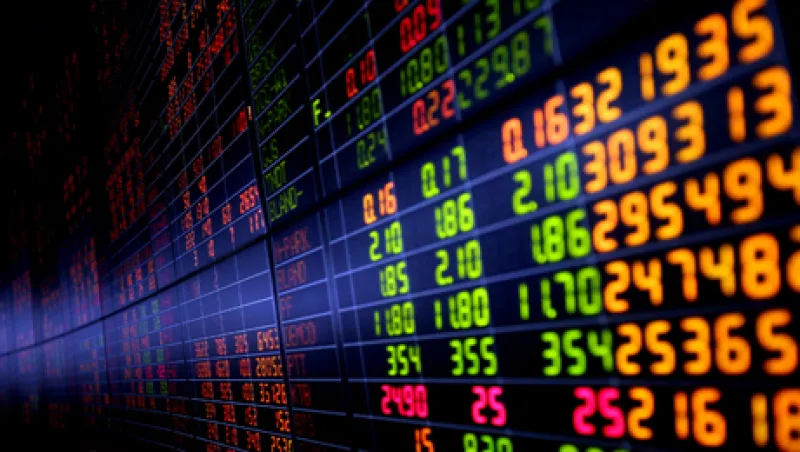There’s a new type of toxic avenger among the dark pool trading crowd.
The Barclays LX dark liquidity crossing network has introduced what it calls a “toxicity framework” — a way of policing an electronic trading venue with diverse participants such as institutional traders, hedge funds, high frequency traders and others. Barclays LX does this by closely analyzing and scoring the signs of unwelcome trading behavior, such as consistently taking a large amount of stock that trades at a low average daily volume. Participants who score poorly are asked to adjust their behavior or risk being blocked from the pool. The network also has antigaming technology that protects against trading information being leaked into the market.
And while dark pools run by large broker-dealers — including Bank of America Merrill Lynch, Credit Suisse, Deutsche Bank and Royal Bank of Scotland — also monitor and police trading behavior using quantitative measures, Barclays differs by making its analysis available to clients. It’s the latest in a series of efforts within the industry to shed more light on these much-maligned trading platforms.
“Clients were asking for transparency,” says Bill Bell, head of electronic distribution for the Americas at Barclays. “They wanted to anonymously remove blocks of stock in a dark pool but they also wanted to understand what all the activity looks like.”
Tereck Fares, director of equity trading at Chicago Equity Partners, is an institutional trader who appreciates the feature. “A lot of dark pools are monitoring on a dynamic basis, but sharing the findings with clients is definitely innovative and frankly, it should be mandatory, like airbags in cars,” he says. Enrico Cacciatore, a senior trader at ING Investment Management has also taken note: “They are looking holistically at every single trade and then being very open about this information as opposed to other dark pools that keep this information to themselves.”
The results for Barclays have been positive: The latest dark pool rankings from Tabb Group and Rosenblatt Securities show that Barclays LX has jumped to the No. 2 spot as measured by trading volume, behind the No. 1 dark pool operator, Credit Suisse, which runs CrossFinder, and ahead of Goldman Sachs, which manages SigmaX.
According to Bell, the revamp of the dark pool has allowed the firm to conduct liquidity profiling that analyzes participants’ activity statistically, from the moment they enter until the moment they leave. “We look at people and how they provide liquidity, take liquidity and how aggressive certain flows are,” he says.
Clients are able to view bubble graphs at regular intervals — quarterly or more frequently — that show the degree to which their own behavior scores as passive, neutral or aggressive. They can then choose which of these types of behaviors they would like to interact with and which ones they would like to avoid. Bell says that by keeping an “all seeing” watch over the pool via behavioral scoring — often in consultation with Barclays — clients tend to develop trading flow that more frequently fits the passive and neutral profile and that falls less and less in the aggressive camp, making the dark pool venue a better experience for everyone.
Bell explains that in the past, dark pool trading venues would monitor in a simpler manner, placing labels on categories of traders — identifying the long-onlys or broker-dealers, for example — and would then ask users what category of trader they wanted to interact with. But ultimately, this did not provide protection from certain types of high frequency trading strategies and other forms of aggressive behavior, as these traders — even if blocked — could reenter the pool via an agency broker. “By using a toxicity assessment tool, we do not allow that to happen,” Bell says.
More than one observer believes that the service represents an advance in dark pool services provided by broker dealers.
“Behavioral scoring approaches the problem of filtering with greater sophistication,” says Justin Schack, managing director and partner at Rosenblatt Securities. He explains that all customers in one category, whether they are institutions or high frequency traders, don’t always behave the same way. So why not focus on trading behavior instead of some slapped-on broker label? “There may very well be an institutional investors that you don’t want to interact with,” Schack says. “Their trading may not benefit you or may make it costly for you to interact with them.” At the same time, he adds, “there may be high frequency traders who are benign counterparties, but you don’t know it until you see how they operate in the pool.”
Matthew Samelson, a principal at research and consulting firm Woodbine Securities agrees. “Behavioral scoring is the next phase of controlling one’s interactions with other liquidity in a dark pool, and the way Barclays is handling this information is innovative,” he says. Cheyenne Morgan, an analyst at Tabb Group, views the use of scoring systems by Barclays as “doing what they need to do to protect customer flow and making sure that customers are not being gamed.”
Some, however, are skeptical about the efficacy of the system or recommend alternative approaches to avoid toxicity in dark pools. Ephraim (Effi) Zakry, head trader at PAZ Investments in New York, believes that behavioral profiling can reduce but will not entirely eliminate toxic trades in dark pool environments.
“Merely assessing the aggressiveness of the players in the pool is not enough,” he says, noting that it is far more likely that savvy traders will adapt their behavior to conform with the dark pool’s requirements and yet remain dangerous. “Smart and well-informed traders can be passive and still pick you off,” he says, and thus, he advises that traders not rely solely on the vigilance of pool operators. “Traders in dark pools should always analyze their executions and not have a false sense of confidence that they are trading in safe water or liquidity pools,” Zakry adds.
Frederick Graboyes, head of algorithmic trading at Liquidnet, the largest independently run dark pool, thinks that dark liquidity trading networks that specifically serve the institutional investor community are the best choice for those seeking to avoid toxic flow. “Bulge bracket firms allow other types of traders to enter the pool — smaller hedge funds and high frequency traders for example — that would not qualify to be in our pool,” Graboyes says. “They are exposing their community to all the different behavior that our members come to us to avoid.”
But Bell of Barclays believes his firm’s approach is a successful trading option for a broad range of clients: “We want buyers and sellers to have a good experience in the pool. The fact that participants know we are watching means we tend to get good behavior. ”






